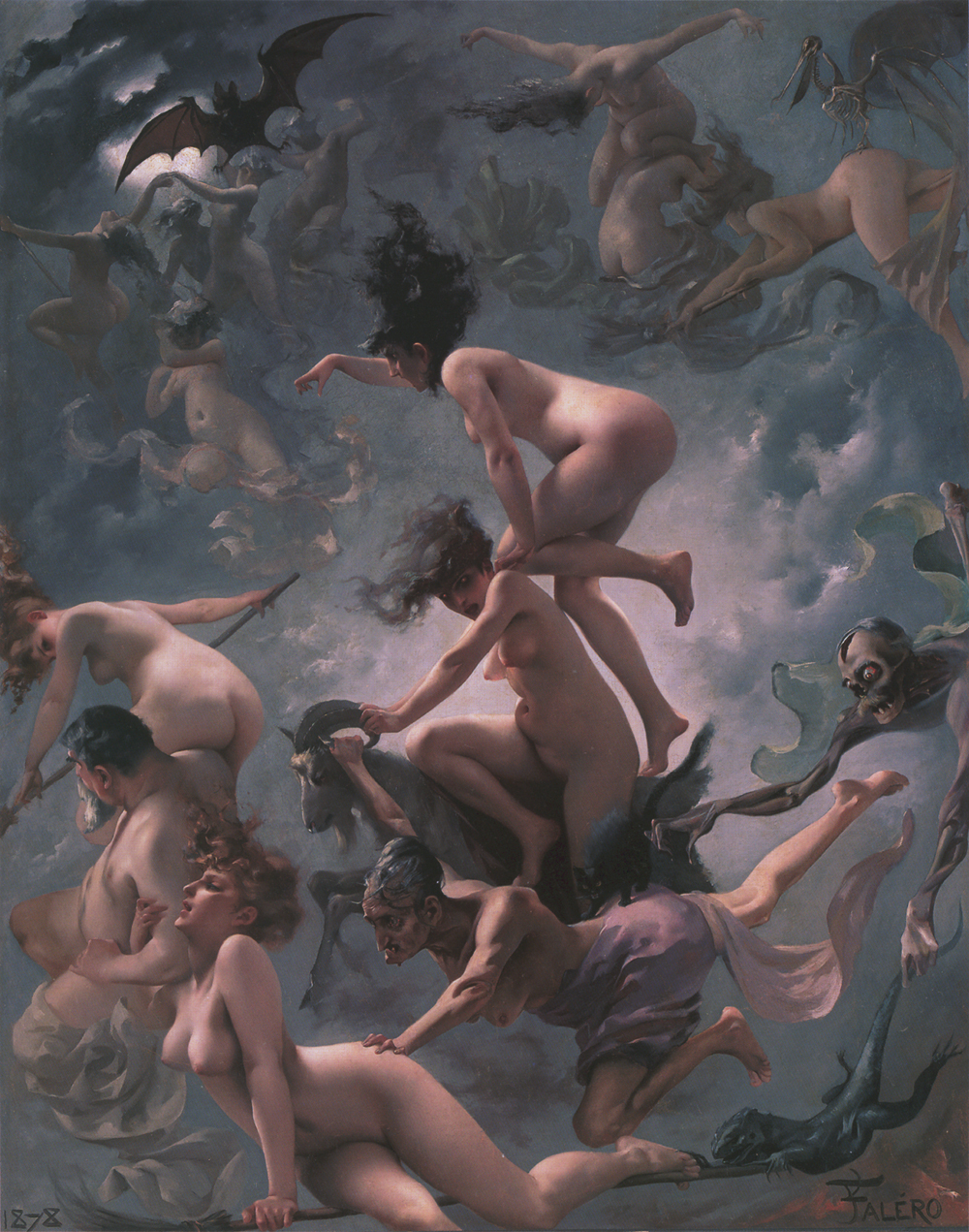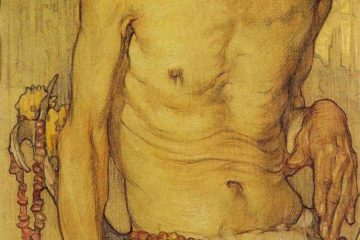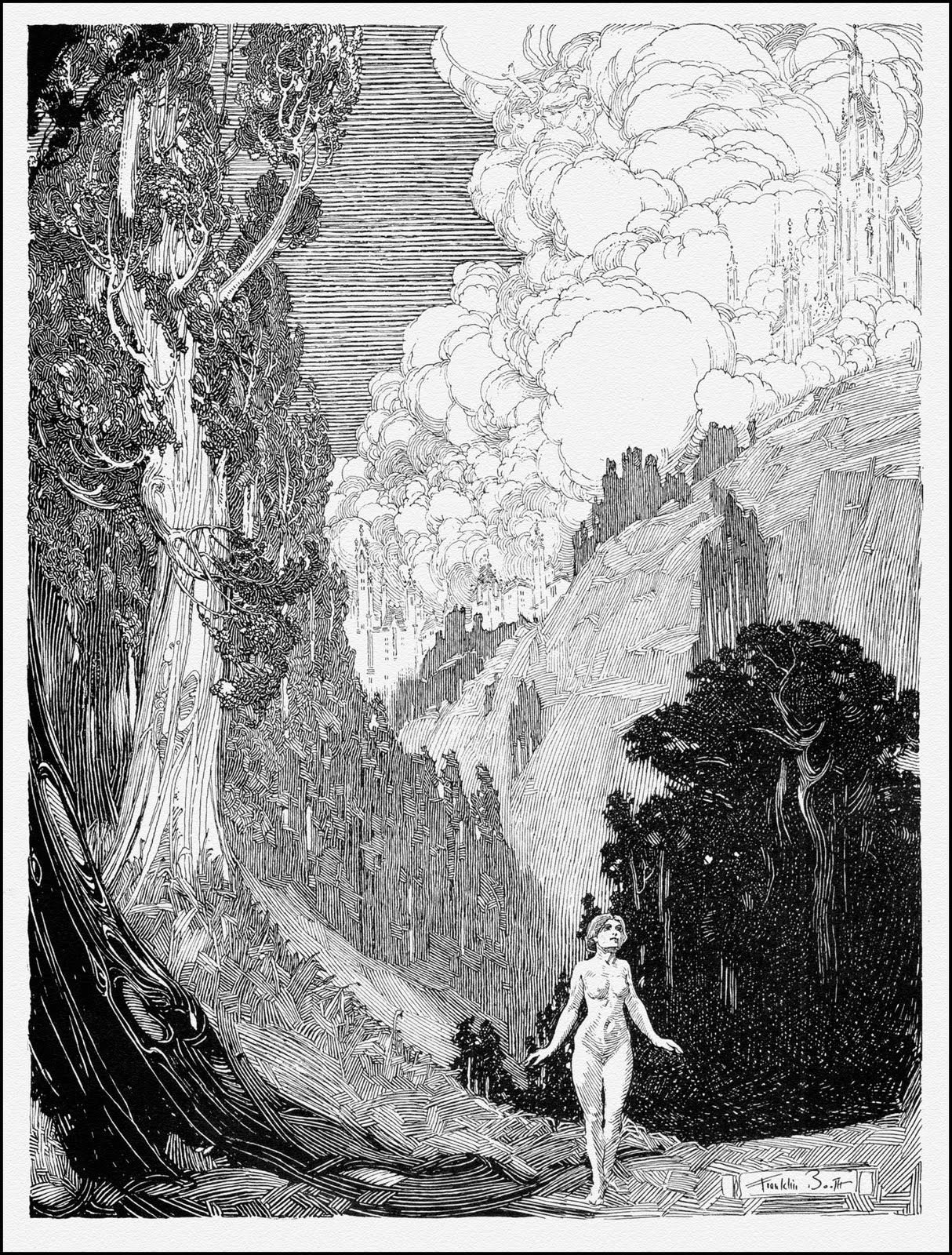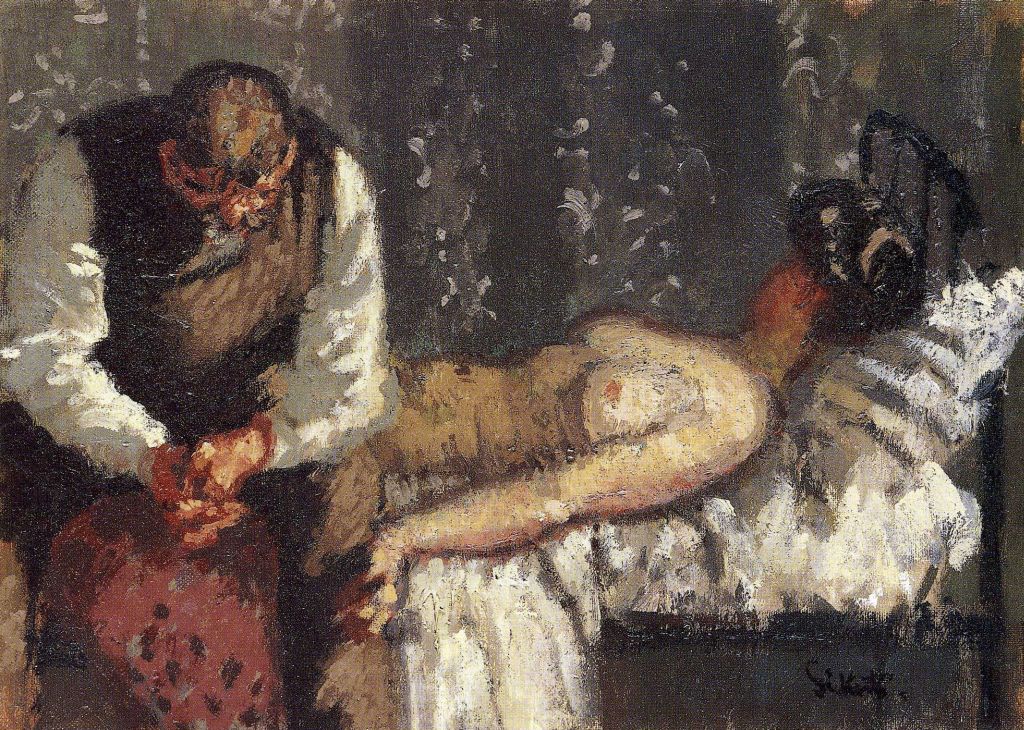When I am talking about art, I often point to nudity and gore as being the “easy way out.” Much of the time they are both overdone, mostly for shock value when there is no real concept behind the art. Here’s some nudity! We’re awesome!
There are times, though, where an artist has taken the controversial idea of nudity (and of just trying to sell sex) in a more unique direction. “Witches on the Sabbath” by Luis Ricardo Falero is a piece that transcends the mere nude, or the inference of something sexual, and instead becomes the definition of an erotic painting.
Sure, there are lots of paintings that could be considered erotic. It often devolves in modern paintings into something condescending, just a meat wagon on parade. The concept of erotica is often tired, filled with various bodies doing various things, and only the pretty people are invited.
Falero took the idea of eroticism in an entirely different direction. The nudes are there, and posed provocatively, of course, with men and women cavorting to and fro with clear and open sexuality. It may even be one of the most sensual paintings ever created. Within, however, are visions of horror and darkness.The dead, along with monsters and other animals, become a part of the scene, integral to the madness in the sky.
The old crone highlights the most important way in which Falero brings the real eroticism of the painting to life. The crone, with her aged and twisted features, reaches for her young protege. The crone isn’t grabbing for any horrific idea, or trying to catch the woman. This is a caress of passion, and it is one that is repeated throughout the image. The woman that the old crone is touching has her arm entwined with the man’s, who in turn has a woman sitting on his shoulder.
All of the characters ride a tempest in the sky, body after body wrapped in the ecstasy of the moment. Falero’s circular composition continually sends the viewer’s eye around and around, from the witches and devils fading into the background to the highly contrasted center stage. It gives the viewer a sense of not just watching a scene, but being drawn into it.
The proof that the viewer is an active participant is right in the center of the image: the woman looking right at us with eyes that seem both erotic and horrific. We might be afraid of her, and wary of the evil she projects. At the same time, we are drawn right to her, ready to be a part of this erotic, and dangerous, vision.
Zoom in on the larger version on Art Renewal
See previous editions and subscribe to new articles here.
References
Witches going to their Sabbath (or The departure of the witches, a.k.a. The Vision of Faust)
Luis Ricardo Falero
1878, oil on canvas
145.5 × 118.2 cm (57.3 × 46.5 in)



